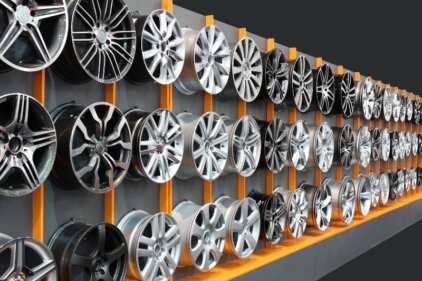In recent years, the world has witnessed a significant transformation in the way we move from one place to another. Traditional modes of transportation, such as car ownership, are being challenged by the rise of alternative options. This shift is driven by various factors, including the increasing popularity of ride-sharing services, the emergence of electric vehicles, and the development of autonomous driving technology. In this article, I will explore how these trends are revolutionizing the mobility industry and speculate on the potential end of car sales as we know them.
The Rise of Alternative Transportation Options
One of the key factors contributing to the decline in car sales is the rise of alternative transportation options. Ride-sharing services, such as Uber and Lyft, have gained immense popularity in urban areas, providing people with a convenient and cost-effective alternative to car ownership. These services allow individuals to request a ride with just a few taps on their smartphones, eliminating the need for owning a car. As a result, many urban dwellers are opting to rely on ride-sharing rather than purchasing their own vehicles.
Additionally, the development of bike-sharing programs and the promotion of public transportation have further expanded the range of options available to commuters. Cities around the world are investing in infrastructure to support these alternative modes of transportation, making it easier for people to choose sustainable and efficient ways to travel. As these options become more accessible and convenient, the need for car ownership diminishes, leading to a decline in car sales.
The Impact of Ride-Sharing Services on Car Sales
The rise of ride-sharing services has had a significant impact on car sales. Studies have shown that the availability of ride-sharing options has led to a decrease in the number of vehicles owned per household. People who rely on ride-sharing services for their daily transportation needs no longer see the need to purchase a car, as they can easily access a vehicle whenever they need one.
Furthermore, ride-sharing services have changed the way people perceive car ownership. Owning a car used to be a symbol of status and freedom, but with the convenience and affordability of ride-sharing, this perception is shifting. Many urban dwellers now view car ownership as a burden rather than a necessity. They prefer the flexibility and convenience of ride-sharing, which allows them to avoid the costs and responsibilities associated with owning a car.
The Future of Electric Vehicles and Their Effect on Car Sales
Another significant factor contributing to the potential end of car sales is the rise of electric vehicles (EVs). With advancements in battery technology and the increasing focus on sustainability, EVs are becoming a viable alternative to traditional petrol and diesel-powered vehicles. The transition to electric transportation is driven by environmental concerns and government policies promoting clean energy.
As the infrastructure for charging stations continues to expand, EVs are becoming more practical for everyday use. The lower operating costs and the potential for reduced maintenance make EVs an attractive option for consumers. These factors, combined with the increasing range and performance of electric vehicles, are likely to accelerate the shift away from traditional cars. If the trend continues, we may see a significant decline in car sales in the coming years.
The Role of Autonomous Vehicles in the Decline of Car Sales
Autonomous vehicles (AVs) represent another major technological advancement that could have a profound impact on the future of car sales. AVs have the potential to revolutionize transportation by eliminating the need for human drivers. With the development of advanced sensors, artificial intelligence, and connectivity, AVs are becoming more capable of navigating our roads safely and efficiently.
The widespread adoption of AVs could lead to a significant reduction in car ownership. Instead of owning a car that sits idle for most of the day, individuals could rely on autonomous ride-sharing services to meet their transportation needs. This would further reduce the demand for personal vehicles and potentially lead to a decline in car sales. However, the full realization of autonomous driving technology is still years away, and there are many regulatory and technological challenges to overcome before it becomes mainstream.
The Implications for the Automotive Industry
The potential end of car sales has far-reaching implications for the automotive industry. Car manufacturers and dealerships must adapt to the changing landscape of mobility to remain relevant and competitive. Traditional business models based on selling cars may no longer be sustainable in the future.
Car manufacturers are already starting to shift their focus towards mobility services and alternative modes of transportation. Many are investing in ride-sharing platforms, developing electric vehicles, and exploring partnerships with autonomous technology companies. By diversifying their offerings and embracing new technologies, car manufacturers can position themselves for success in the evolving mobility industry.
Car dealerships also face significant challenges in a future where car sales decline. They will need to find new ways to attract customers and generate revenue. Offering maintenance and repair services, selling accessories and customization options, and providing mobility-as-a-service solutions are some strategies that dealerships can explore. By embracing change and adapting their business models, car dealerships can continue to thrive in a world where car ownership is no longer the norm.
Adapting to the Shift: Strategies for Car Manufacturers and Dealers
To navigate the changing landscape of mobility, car manufacturers and dealerships must adopt new strategies. Embracing electric vehicle technology is one of the key steps they can take. By investing in the development of EVs and building a robust charging infrastructure, manufacturers can position themselves as leaders in the transition to electric transportation.
Collaboration and partnerships with ride-sharing companies and autonomous technology providers are another avenue for car manufacturers and dealerships to explore. By leveraging their expertise in vehicle manufacturing and maintenance, they can play a vital role in shaping the future of mobility services.
Furthermore, investing in research and development is crucial for staying ahead of the curve. Car manufacturers and dealerships must continuously innovate and adapt to meet the evolving needs of consumers. This includes exploring new technologies, such as connected cars and smart mobility solutions, to provide a seamless and personalized transportation experience.
The Potential Benefits for Consumers
While the potential end of car sales may seem daunting, there are several benefits for consumers. The rise of alternative transportation options can lead to reduced traffic congestion, improved air quality, and enhanced urban livability. By relying on shared mobility services and electric vehicles, individuals can contribute to a more sustainable future.
Moreover, the shift towards mobility-as-a-service can offer consumers greater flexibility and cost savings. Instead of investing a significant amount of money in purchasing a car, individuals can pay for transportation services on an as-needed basis. This can free up financial resources and provide more options for consumers.
Speculating the End of Car Sales
In conclusion, the mobility industry is undergoing a significant transformation, driven by the rise of alternative transportation options, the development of electric vehicles, and the emergence of autonomous driving technology. These trends are revolutionizing the way we move, and they have the potential to bring about the end of car sales as we know them.
While the future of car sales remains uncertain, it is clear that car manufacturers, dealerships, and consumers must adapt to the changing landscape of mobility. By embracing new technologies, exploring innovative business models, and prioritizing sustainability, we can shape a future where transportation is more efficient, accessible, and environmentally friendly.





